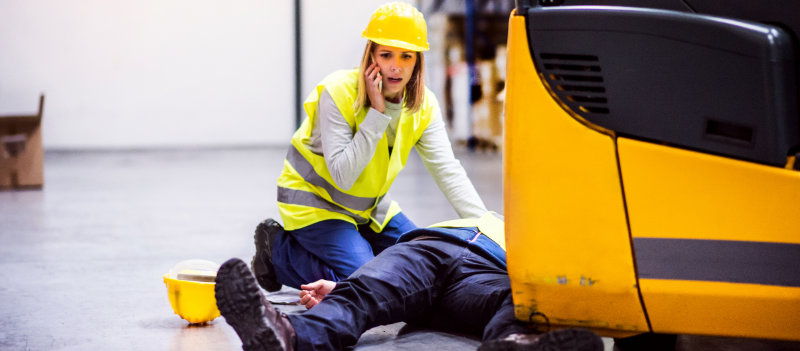I. Introduction
Cardiopulmonary resuscitation (CPR) is a critical life-saving skill that can mean the difference between life and death in emergencies. When someone experiences cardiac arrest, every second counts. Bystander CPR, performed by individuals who happen to be present when an emergency occurs, can significantly increase a person’s chances of survival until professional medical help arrives.
CPR is a technique used to maintain blood flow to vital organs, particularly the brain when a person’s heart has stopped beating. It involves a combination of chest compressions and rescue breaths, though in some cases, chest compressions alone can be effective. By learning and mastering CPR techniques, you equip yourself with the ability to potentially save a life in a critical moment.
II. Understanding Cardiac Arrest
Before delving into CPR techniques, it’s crucial to understand what cardiac arrest is and how to recognize it. Cardiac arrest occurs when the heart suddenly stops pumping blood effectively throughout the body. This can be caused by various factors, including heart disease, severe trauma, drowning, or electrical shock.
Recognizing the signs of cardiac arrest is the first step in providing life-saving assistance. Key indicators include:
- Sudden collapse
- Unresponsiveness to touch or sound
- Absence of normal breathing or only gasping
- No pulse (though this can be difficult for untrained individuals to detect accurately)
When you encounter someone exhibiting these signs, it’s crucial to act quickly and decisively.
III. Assessing the Situation
Before initiating CPR, it’s important to quickly assess the situation:
- Ensure scene safety: Make sure there are no immediate dangers to yourself or the victim. You can’t help if you become a victim yourself.
- Check for responsiveness: Tap the person’s shoulder and shout, “Are you okay?” If there’s no response, they may be in cardiac arrest.
- Call for emergency services: If the person is unresponsive, immediately call your local emergency number (such as 911 in the United States) or ask someone else to do so while you begin CPR.
Once you’ve completed these initial steps, you’re ready to begin CPR if necessary. Remember, in the case of cardiac arrest, starting CPR quickly is crucial – even if you’re not completely sure about the technique, attempting CPR is better than doing nothing at all.
IV. Chest Compressions
Chest compressions are the cornerstone of effective CPR. They manually pump blood through the body, supplying oxygen to vital organs. Here’s how to perform them correctly:
A. Proper hand placement
- Kneel beside the person’s chest.
- Place the heel of one hand on the center of the chest, specifically on the lower half of the breastbone (sternum).
- Place your other hand on top of the first, interlacing your fingers.
- Keep your arms straight and position your shoulders directly over your hands.
B. Compression depth and rate
- Push hard and fast. Aim to compress the chest at least 2 inches (5 cm) deep.
- Perform compressions at a rate of 100 to 120 per minute. This is about two compressions per second.
- A helpful tip is to perform compressions to the beat of the song “Stayin’ Alive” by the Bee Gees, which has the right tempo.
C. Allowing chest recoil
- After each compression, allow the chest to fully recoil (come back up).
- Complete chest recoil allows the heart to refill with blood between compressions.
- Avoid leaning on the chest between compressions, as this can prevent full recoil.
V. Rescue Breaths
While chest compressions are crucial, rescue breaths can provide additional oxygen to the body. However, if you’re not trained or uncomfortable giving rescue breaths, it’s acceptable to do chest compressions only.
A. When to perform rescue breaths
- In standard CPR, rescue breaths are given after every 30 chest compressions.
- For drowning victims or children, start with 5 rescue breaths before beginning chest compressions.
B. Proper technique for mouth-to-mouth resuscitation
- Tilt the person’s head back slightly to open the airway.
- Pinch the nose shut.
- Take a normal breath, and cover the person’s mouth with yours to create a seal.
- Give two one-second breaths, watching for the chest to rise with each breath.
C. Using a barrier device
- If available, use a face shield or pocket mask to create a barrier between your mouth and the victim’s.
- These devices can help prevent disease transmission and make you more comfortable performing rescue breaths.
Remember, the most important aspect of CPR is maintaining blood circulation through chest compressions. If you’re unable or unwilling to give rescue breaths, continuous chest compressions are still highly beneficial.
VI. Conclusion
While this article provides an overview of CPR techniques, nothing replaces hands-on training and certification. If you’re in the Indianapolis area, there’s an excellent opportunity to gain official CPR certification in Indianapolis through CPR Indianapolis.
CPR Indianapolis is an American Heart Association training site that offers a range of certifications, including:
- BLS for Healthcare Providers
- ACLS (Advanced Cardiovascular Life Support)
- PALS (Pediatric Advanced Life Support)
- CPR and First Aid courses
Whether you’re seeking initial certification or need to renew your existing credentials, CPR Indianapolis provides stress-free, hands-on classes that will boost your confidence and skills in emergency situations.
By enrolling in a CPR certification course in Indianapolis, you’ll receive:
- Expert instruction from certified trainers
- Hands-on practice with proper equipment
- The latest techniques and protocols
- Official American Heart Association certification
Don’t wait for an emergency to wish you had these life-saving skills. Take the next step and enroll in a CPR certification course in Indianapolis today. Remember, CPR Indianapolis offers the best CPR training in Indianapolis, ensuring you’re well-prepared to make a difference when it matters most.
Invest in yourself and your community by getting certified. You never know when these skills might save a life – it could be a stranger’s, a loved one’s, or even your own.





